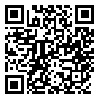Volume 37 -
J Dent Med-tums 2024, 37 - : 46-74 |
Back to browse issues page
Download citation:
BibTeX | RIS | EndNote | Medlars | ProCite | Reference Manager | RefWorks
Send citation to:



BibTeX | RIS | EndNote | Medlars | ProCite | Reference Manager | RefWorks
Send citation to:
Yousefi Nojookambari N, Naderi M, Askari R, Talebi S, Mohammadhosseini M, Shabani S et al . Deciphering the ecophysiological interactions of oral bacterial pathogens with host glycome causing pulp/periapical and periodontal infections: A systematic review. J Dent Med-tums 2024; 37 : 6
URL: http://jdm.tums.ac.ir/article-1-6249-en.html
URL: http://jdm.tums.ac.ir/article-1-6249-en.html
Neda Yousefi Nojookambari1 
 , Malihe Naderi2
, Malihe Naderi2 
 , Razie Askari2
, Razie Askari2 
 , Somayeh Talebi3
, Somayeh Talebi3 
 , Mana Mohammadhosseini4
, Mana Mohammadhosseini4 
 , Sahar Shabani5
, Sahar Shabani5 
 , Sajjad Yazdansetad *
, Sajjad Yazdansetad * 
 2
2

 , Malihe Naderi2
, Malihe Naderi2 
 , Razie Askari2
, Razie Askari2 
 , Somayeh Talebi3
, Somayeh Talebi3 
 , Mana Mohammadhosseini4
, Mana Mohammadhosseini4 
 , Sahar Shabani5
, Sahar Shabani5 
 , Sajjad Yazdansetad *
, Sajjad Yazdansetad * 
 2
2
1- PhD of Medical Bacteriology, Department of Microbiology, Faculty of Medicine, Shahid Beheshti University of Medical Sciences, Tehran, Iran
2- PhD of Microbiology, Infectious Diseases Research Center, Golestan University of Medical Sciences, Gorgan, Iran
3- PhD of Microbiology, Department of Microbiology, Faculty of Advanced Science and Technology, Tehran Medical Sciences, Islamic Azad University, Tehran, Iran
4- MSc of Cellular and Molecular Biology, Infectious Diseases Research Center, Golestan University of Medical Sciences, Gorgan, Iran
5- MSc of Cellular and Molecular Biology, Dental Research Center, Golestan University of Medical Sciences, Gorgan, Iran
2- PhD of Microbiology, Infectious Diseases Research Center, Golestan University of Medical Sciences, Gorgan, Iran
3- PhD of Microbiology, Department of Microbiology, Faculty of Advanced Science and Technology, Tehran Medical Sciences, Islamic Azad University, Tehran, Iran
4- MSc of Cellular and Molecular Biology, Infectious Diseases Research Center, Golestan University of Medical Sciences, Gorgan, Iran
5- MSc of Cellular and Molecular Biology, Dental Research Center, Golestan University of Medical Sciences, Gorgan, Iran
Abstract: (734 Views)
Background and Aims: Oral bacteria play an important role in oral diseases, due to their high adaptability to different environmental areas of the mouth. In this article, an attempt was made to describe the molecular mechanisms involved in the physiological relationships of oral and dental environment bacteria and their pathogenic significance with molecular approaches.
Materials and Methods: The present systematic review was written based on the advanced and standard search of keywords including Oral bacteria, Biofilm, and Dental diseases in PubMed, Springer, Scopus, Medline, Google Scholar, Science Direct, and Web of Science databases. For this purpose, an advanced and systematic search of articles published from 1993 to 2023 was conducted to compile the present article.
Results: Bacteria in the oral cavity have nutritional adaptations that are important for living in pathogen-host relationships, including adapting to proteolytic living conditions, using the host's glycome as a nutritional interface. This includes the use of host-derived sialic acid and other glycosidases in oral bacteria. Some of these bacteria adhere to surfaces such as salivary, epithelial proteins, and glycans, which ultimately lead to biofilm formation. Bacteria living in the oral environment are constantly exposed to a wide range of stress-causing factors and oxidative stress in the biofilm.
Conclusion: Dental caries, pulp, periapical, and periodontitis diseases (including gingivitis) are among the most common bacterial diseases. Among them, tooth decay caused by the presence of Streptococcus mutans is the most common dental disease due to the production of acids from carbohydrate fermentation which is characterized by the demineralization of tooth structure.
Materials and Methods: The present systematic review was written based on the advanced and standard search of keywords including Oral bacteria, Biofilm, and Dental diseases in PubMed, Springer, Scopus, Medline, Google Scholar, Science Direct, and Web of Science databases. For this purpose, an advanced and systematic search of articles published from 1993 to 2023 was conducted to compile the present article.
Results: Bacteria in the oral cavity have nutritional adaptations that are important for living in pathogen-host relationships, including adapting to proteolytic living conditions, using the host's glycome as a nutritional interface. This includes the use of host-derived sialic acid and other glycosidases in oral bacteria. Some of these bacteria adhere to surfaces such as salivary, epithelial proteins, and glycans, which ultimately lead to biofilm formation. Bacteria living in the oral environment are constantly exposed to a wide range of stress-causing factors and oxidative stress in the biofilm.
Conclusion: Dental caries, pulp, periapical, and periodontitis diseases (including gingivitis) are among the most common bacterial diseases. Among them, tooth decay caused by the presence of Streptococcus mutans is the most common dental disease due to the production of acids from carbohydrate fermentation which is characterized by the demineralization of tooth structure.
Article number: 6
Keywords: Dental Caries, Gingivitis, Glycoside hydrolases, Polysaccharides, Periodontitis, Bacterial infections
Type of Study: review article |
Subject:
oral medicine
Received: 2023/11/1 | Accepted: 2024/05/20 | Published: 2024/03/29
Received: 2023/11/1 | Accepted: 2024/05/20 | Published: 2024/03/29
Send email to the article author
| Rights and Permissions | |
 |
This work is licensed under a Creative Commons Attribution-NonCommercial 4.0 International License. |


